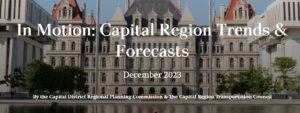Drought Risk in the Capital District Once Again
The Capital Region, along with the northeast in general, is not accustomed to drought conditions. While much of the southeast and western United States have experienced deep, prolonged, drought in recent years, that is not the reality for the northeast. However, even the northeast is not immune to droughts.
Below-average rainfall puts the region at risk for a short-term drought.
The July 17th report from the National Drought Monitor shows that much of New York State, including the Capital District, is abnormally dry. As we head through the summer, there is a possibility that these dry conditions could be exacerbated. The Northeast Regional Climate Center and NOAA’s Climate Prediction Center are forecasting above average temperatures and average precipitation for the region, a combination that would leave soil moisture, and stream levels lower.

Evolving Drought Conditions
In 2016, the northeast suffered a severe drought like those experienced in California during that same year. Western New York and much of Massachusetts were heavily impacted by this drought, including the Capital District. Since then, CDRPC has monitored conditions so that local municipalities are as informed as possible on what they may be up against. While the four-county region is not known for large-scale agricultural output, drought still impacts local crops and farms. Drought also increases the chances for wildfires and can impact recreation or tourism.
Beginning in January 2017, the region experienced seven straight months of average, to above-average, monthly precipitation. In May alone of that year, precipitation was more than 3 inches above average, erasing almost all drought. By July of that year, the region had largely recovered; though some subsurface aquifers were still below their historic averages. Still, though, soil moisture levels improved and the region’s reserves of water replenished slightly.

The cyclical nature of weather patterns took their course over the second half of 2017. The final five months of the year saw average, to below average, monthly precipitation rates. By the end of the year, the region’s precipitation had equalized and conditions were considered at, or near, normal. However, this stretch of dry weather spent down the reserves that built in the first half of 2017. These reserves had not completely recovered from the drought in 2016, so the dry second half of 2017 left the region with little wiggle room for future dry conditions.
Now, more than six months through the year, conditions are again abnormally dry, bordering on D1 moderate drought. May and June saw combined monthly precipitation rates fall 2.5 inches below normal. While that puts the annual precipitation rate at an average for the year, soil moisture is low.
According to the Department of Earth and Atmospheric Science at the Northeast Regional Climate Center, May and June precipitation levels were below average, bringing the region’s annual cumulative totals below average. This helps to explain why the drought monitor’s most recent report shows the area as “Abnormally Dry.” According to the NRCC:
July has already been drier than normal for many areas within the Northeast. By the middle of the month, only a trace of rain had been recorded in Washington National, DC, ranking this as their driest first half of the month on record. Baltimore, MD, Portland ME, and Concord, NH have also received less than 10% of normal precipitation during the first half of July. For 13 major climate sites within the region, the beginning of July has been among the 10 driest on record.
Data shows that the period from July 1 through 15 was the 6th warmest in the city of Albany’s history. In that 15 day period, the average temperature was 77.7 degrees Fahrenheit (6.1 degrees above average). At the same time, it was the 16th driest stretch for that period in the city’s history, recording just 0.52 inches of rain (only 26% the normal rate).

Another contributing factor is the water level is the region’s aquifers. According to the U.S. Geological Survey, the region’s aquifers are trending at, or below, their historic levels. These aquifers have struggled to recover from the drought in 2016 when many of them reached, historic lows. Evidently, the winter snows did not provide enough snowmelt to replenish the reserves of water to withstand the dry months. As a result, the region’s aquifers are largely below average, a condition that is slow to reverse.
Looking Forward
The National Weather Service’s Climate Prediction Center is forecasting above average temperatures, with average precipitation levels, through September. If this forecast is accurate, conditions will not worsen, but also are unlikely to improve. Dry conditions can lead to increase chances of wildfires, stunted growth in crops, and can impact water-based tourism. If the drought were to become serious enough, municipalities may need to implement water restrictions. These could include everything from banning washing your car and watering your yard, to conservation efforts such as installing rain barrels.
For our previous issue on regional drought conditions, you can find it here.


